Wisdom Teeth Extractions – Kerrville, TX
Remove Wisdom Teeth to Safeguard Your Smile
If you’re a young adult and have recently developed a persistent or severe throbbing in the back of your teeth or jawbone, then you may be dealing with wisdom teeth. These are the last molars to grow in and are known for causing problems in their attempt to erupt, which negatively affects your dental health. As a result, they’re often extracted before they can cause progressively worsening concerns.
Continue reading to learn more about how Dr. Butler handles wisdom teeth extractions, and feel free to contact us for additional information.
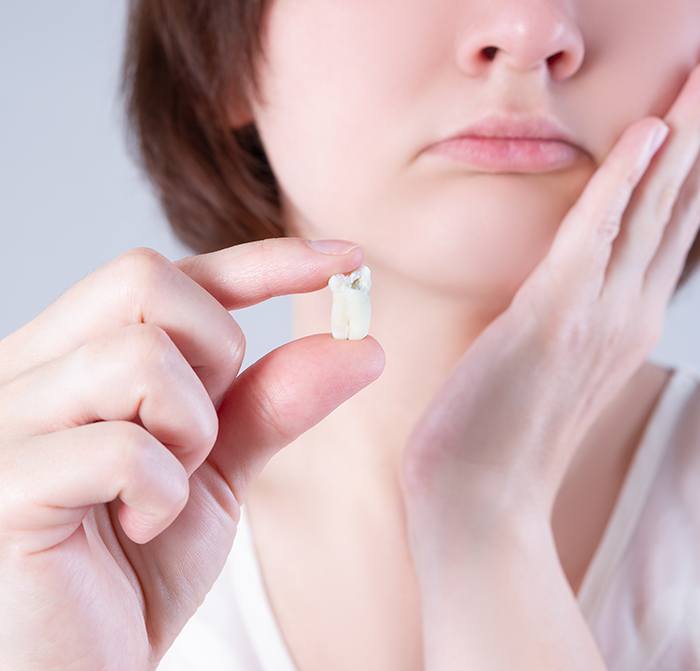
Why Choose Carroll R. Butler, DDS Family Dentistry for Wisdom Teeth Extractions?
- Multiple Options for Sedation
- Advanced Technology for Improved Patient Comfort
- Flexible Financing Available
What are Wisdom Teeth?
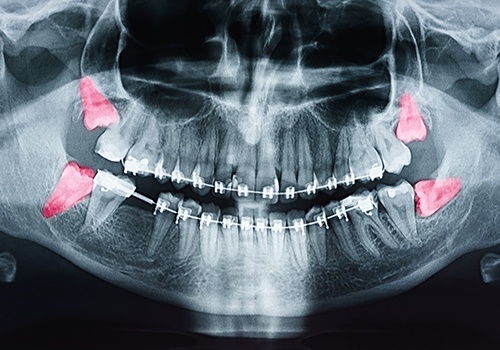
These late-arrivals usually show up behind your farthest molars between the ages of 17 and 25 years old. Most people have four of them; one for each quadrant of their mouth. However, some people are born with 1, 2, or 3, and others may never grow any at all.
It’s believed that our ancestors developed them to compensate for damaged or dislodged molars as they approached adulthood. Their rough diet of raw meat, nuts, and berries likely required these additional teeth for survival if others had been injured. Today, they’re considered a vestigial feature because they’re unnecessary when we have access to modern dental care, cooked food, and utensils.
Why Do Wisdom Teeth Need to Be Removed?
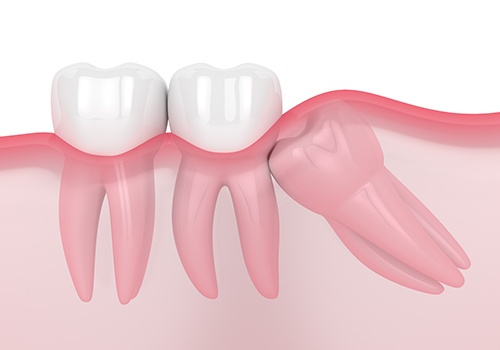
Humans today have smaller, rounder mouths than our ancient ancestors, so wisdom teeth don’t have the same space to push through the gum line as they once did. They can contribute to a variety of oral issues, such as:
- Impaction. If they are trapped beneath your gumline or in your jawbone, you may develop aches in addition to a bite misalignment.
- Infection. Bacteria can penetrate your buried tooth and cause inflammation or infection that can spread if left unaddressed.
- Discomfort. You can develop aches in your teeth, jaw, head, neck, and face if they grow in at an inappropriate angle.
- Overcrowding. Neighboring teeth may be pushed out of the way in their attempt to clear your gums.
- Dental disease. Partially erupted molars are difficult to keep clean, so you’re more vulnerable to tooth decay and gum disease.
What to Expect from the Wisdom Teeth Procedure
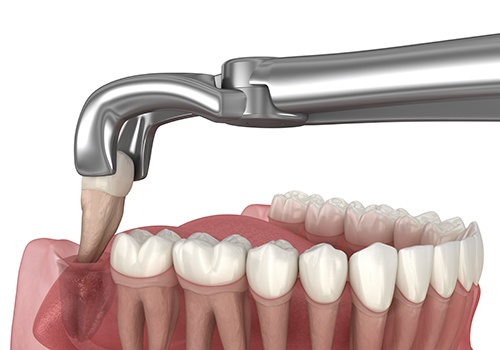
If your wisdom teeth have fully erupted from your connective tissues, Dr. Butler might be able to perform a simple extraction. First, our team will numb the area with a local anesthetic and provide sedatives as needed, like nitrous oxide, to keep you comfortable. Then, Dr. Butler will gently lift the tooth from its socket using a special dental elevator before grasping it gently with forceps and wiggling it free.
However, many wisdom teeth are impacted or haven’t fully cleared your gums and require a surgical extraction. For this procedure, we’ll numb and sedate you appropriately. Then, Dr. Butler will create a small incision to access the troublesome tooth. It may need to be broken into smaller pieces before it can be successfully removed from your jawbone.
Recovering from Wisdom Teeth Extraction
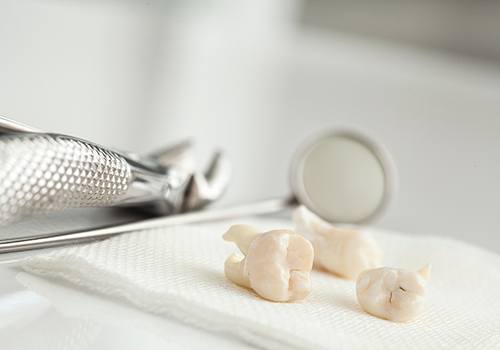
After your appointment, it’s imperative that your mouth forms a blood clot over the extraction site to protect the underlying nerves and bone tissue. If it’s damaged or dislodged, you could develop a potentially painful complication known as dry socket.
For a smooth recovery, we recommend:
- Wait to brush. You can rinse with warm salt water in the first 24 hours to gently remove germs and particles that might cause an infection. You can usually resume brushing and flossing after 2 to 3 days, as long as you’re careful around the surgical site.
- Drink plenty of fluids. You need water to support your immune system and flush your mouth, but avoid straws because the force of suction can dislodge your blood clot.
- Stick to soft foods. To avoid injuring your tender teeth or gums, stick to easy-to-eat options like scrambled eggs, mashed potatoes, yogurt, and ice cream.
- Take medications. If you were prescribed pain meds or antibiotics, take them as directed. Otherwise, it’s usually safe to take Tylenol and ibuprofen to address discomfort.
Wisdom Tooth Extractions FAQs
Why Do We Have Wisdom Teeth?
These days, wisdom teeth seem to cause nothing but problems. However, they were beneficial for our ancient ancestors. Early humans enjoyed a diet of raw foods, including meat, berries, nuts, roots, and leaves. They didn’t cut up their food or cook it. Because of this, they needed a broader jaw with strong molars, so wisdom teeth didn’t usually cause any problems. Today, our food is cooked, baked, cut up, or otherwise prepared, so it is much softer and easy to consume, so we no longer require wisdom teeth. On top of that, our jaws are no longer wide enough for them, so they tend to cause more harm than good when they erupt.
How Do You Make Wisdom Teeth Pain Go Away?
The only way to completely resolve this issue is to have the wisdom teeth removed. Until then, there are some remedies to temporarily lessen your discomfort. Try some of the following:
- Wrap an ice pack with a towel and apply it to your cheek for no more than 20 minutes at a time. This can be done every few hours.
- Take over-the-counter pain relievers, like ibuprofen, as directed.
- Use over-the-counter oral numbing gel containing benzocaine to soothe the gums.
- Rinse your mouth with a saltwater solution. Just add one teaspoon of salt to an eight-ounce glass of water and swish.
What’s the Best Age to Get Wisdom Teeth Removed?
There isn’t one specific age that is ideal for wisdom tooth removal. However, most dental professionals recommend that they are removed in early adulthood. The procedure and recovery are both easier when the patient is younger. This is because as a person ages, the wisdom teeth become more embedded in the jaw, making the procedure more complicated and the healing period takes longer. If your dentist suggests that you get your wisdom teeth removed, it’s better to do so earlier than later. You want to avoid risks like impaction, decay, cysts, and damage to surrounding teeth.
How Long Does Wisdom Tooth Surgery Take?
Regardless of how long your procedure actually takes, it will feel like barely any time has passed if you are being sedated. It usually takes about 15 to 20 minutes to extract each wisdom tooth, so removing all of them can take up to 90 minutes. The time will vary depending on the locations and positions of the teeth. During your consultation, we will be able to give you a more specific estimate based on your unique case.

